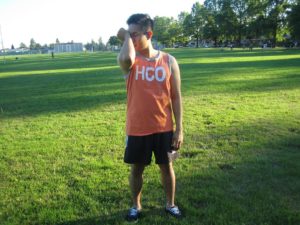Pinkeye involves inflammation of the thin tissue that covers the white part of the eye and within the eyelids.
Indications
There are various forms of pinkeye that you should be familiar with:
Bacterial
- Pinkish or reddened, itchy, sore eyes
- Can affect one or both eyes
- There is increased amount of greenish or yellowish drainage

The hands are usually contaminated by being directly exposed to the drainage from the infected eye or by touching surfaces that have been soiled by respiratory tract secretions. - The eyes might be sealed shut in the morning
Viral
- Swollen, pinkish, watery eye that is sensitive to light
- Can affect only one eye
Allergic
- Redness
- Itchiness
- Excessive tearing
- Usually affects both eyes
Chemical
- Red and watery eyes particularly after swimming in chlorinated water
Incubation and contagious period
Depending on the type of pinkeye the child has, the incubation period tends to vary.
Bacterial
- The incubation period is unknown since the bacteria responsible is usually present and do not trigger an infection.
- The contagious phase ends once the suitable course of medication is started or if the symptoms have settled.
Viral
- Oftentimes occur early during a viral respiratory tract disease along with other indications.
- In one form of viral pinkeye, adenovirus might be contagious for weeks after the manifestation of the signs and symptoms. Children with the infection are often sick with sore throat, fever and other respiratory tract symptoms
Allergic
- Develops as a response to exposure to a substance that triggers an allergic reaction. The reaction can occur right away or delayed for several hours or days after exposure.
- There is no contagious period.
Chemical
- The pinkeye often develops right after exposure to an irritating substance and there is no contagious period.
How does pink eye spread?
The hands are usually contaminated by being directly exposed to the drainage from the infected eye or by touching surfaces that have been soiled by respiratory tract secretions.
Prevention
- A doctor should be consulted for diagnosis and proper treatment. Using antibiotics in preventing its spread is still uncertain. Most children with the condition can recover within 5-6 days without using antibiotics.
- Proper hand hygiene should be observed before and after contacting the eyes, mouth and nose.
- Thorough sanitation of all objects and surfaces touched by the hands or faces such as doorknobs, tables, toys, telephones and blankets.

